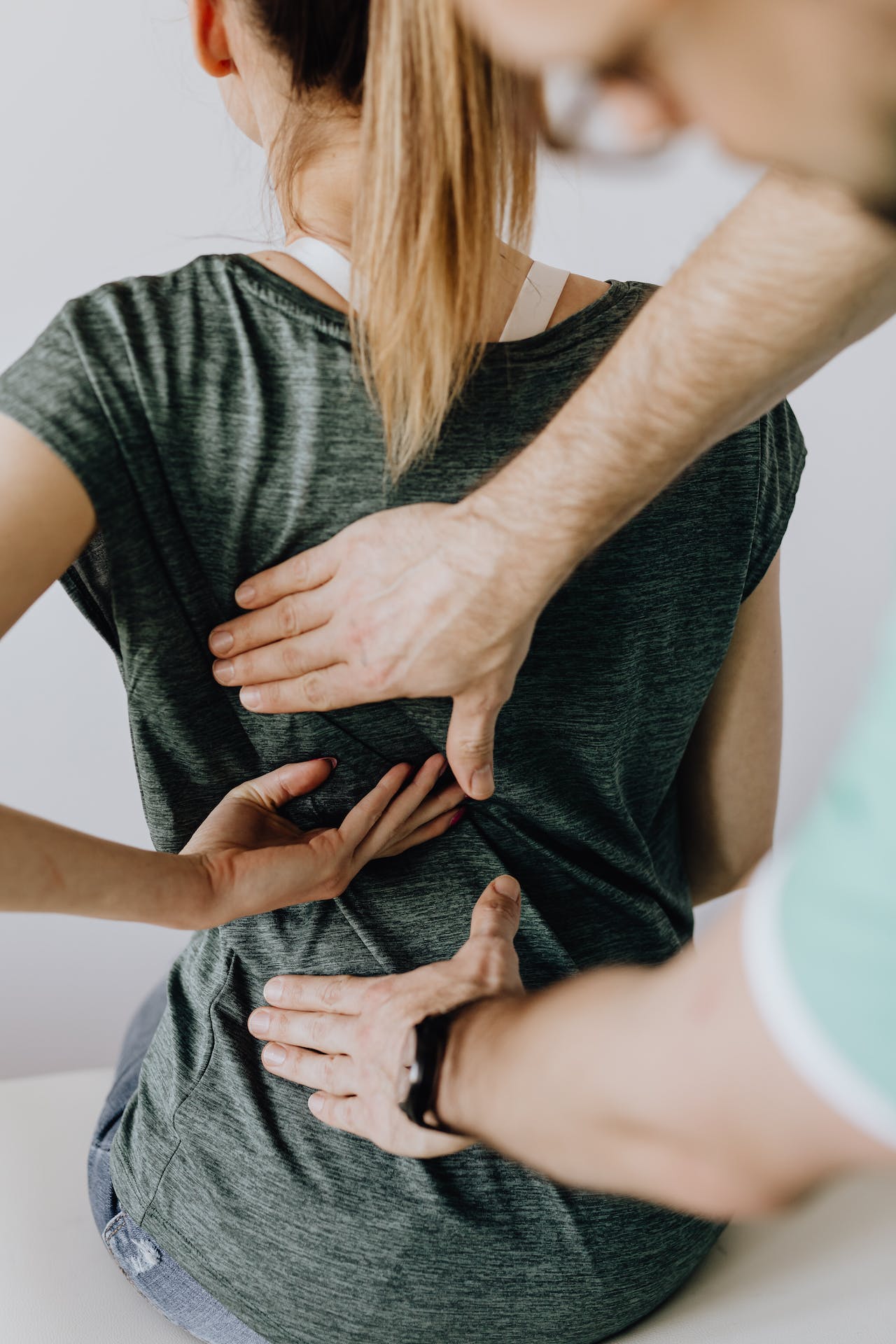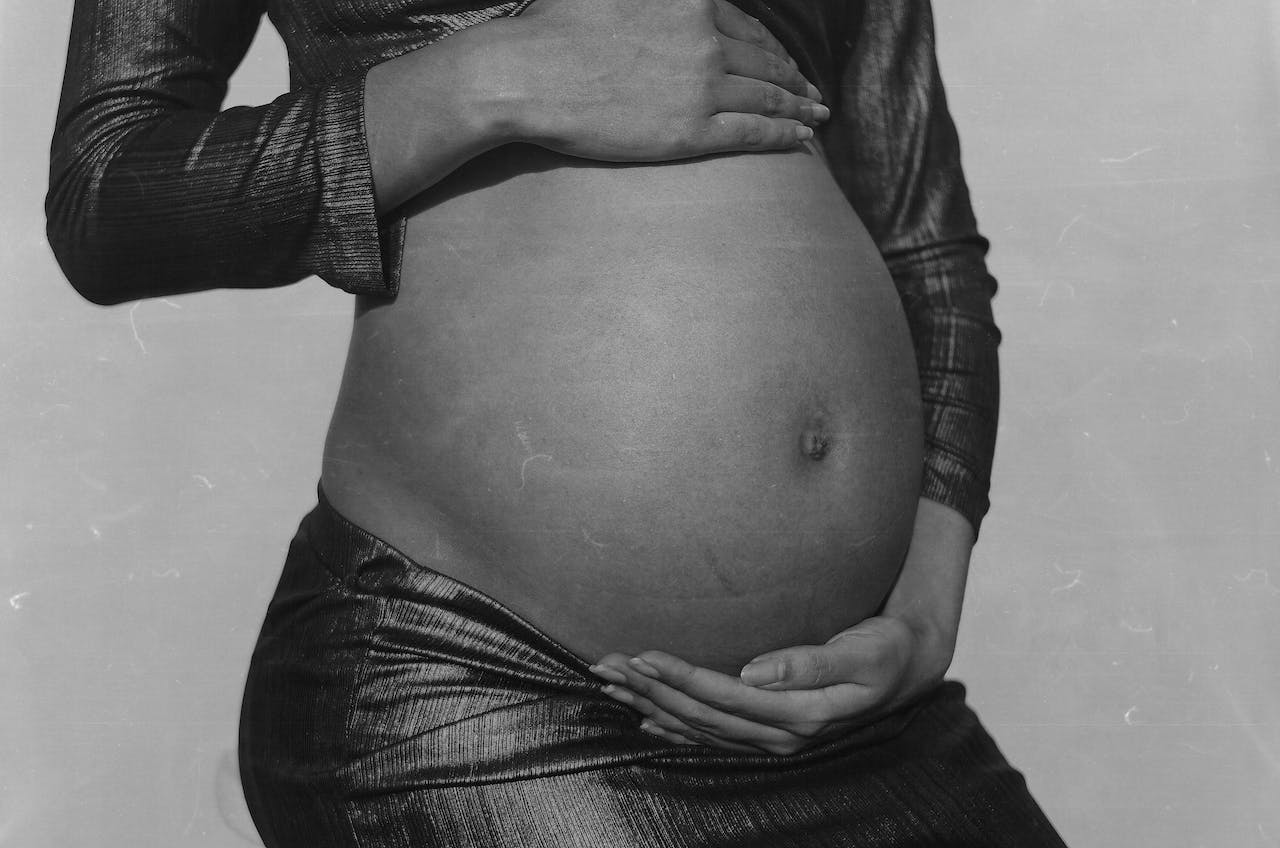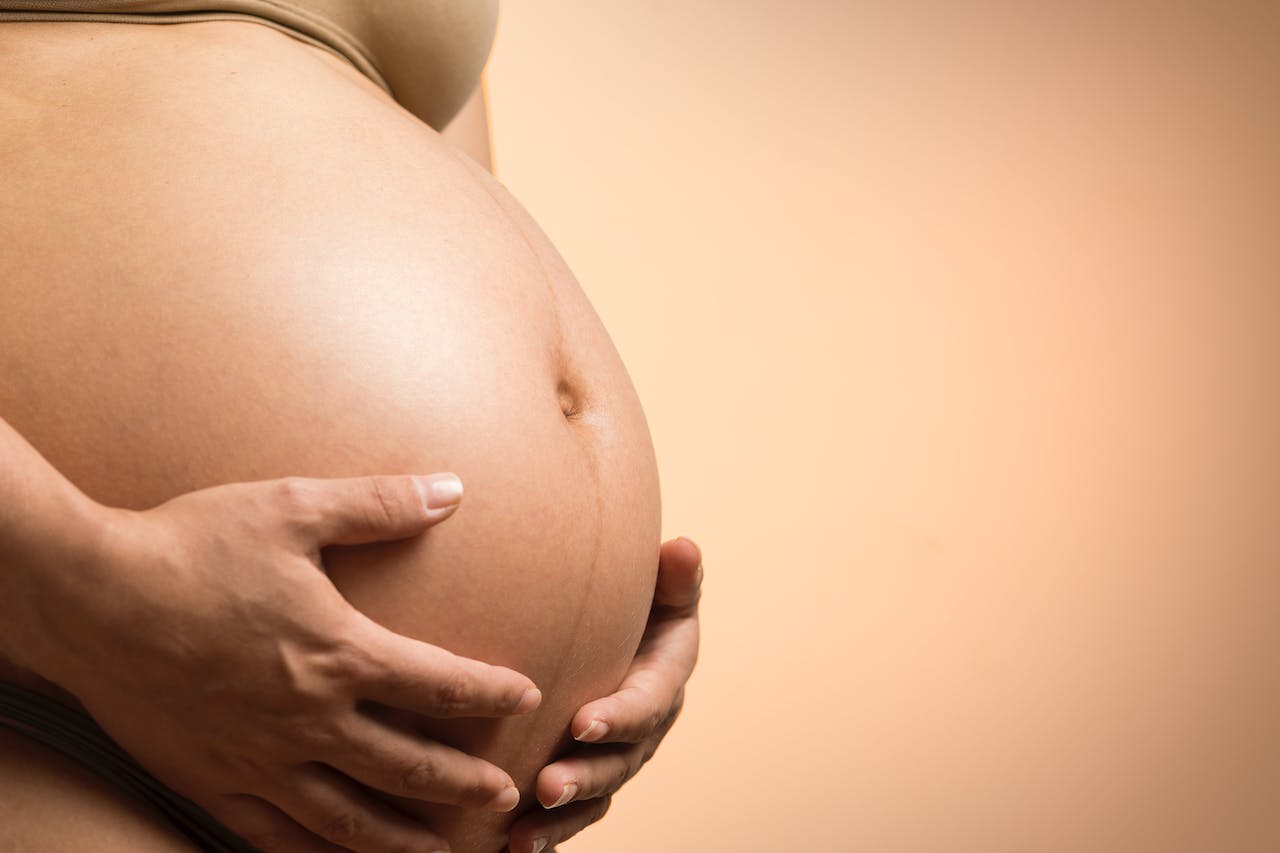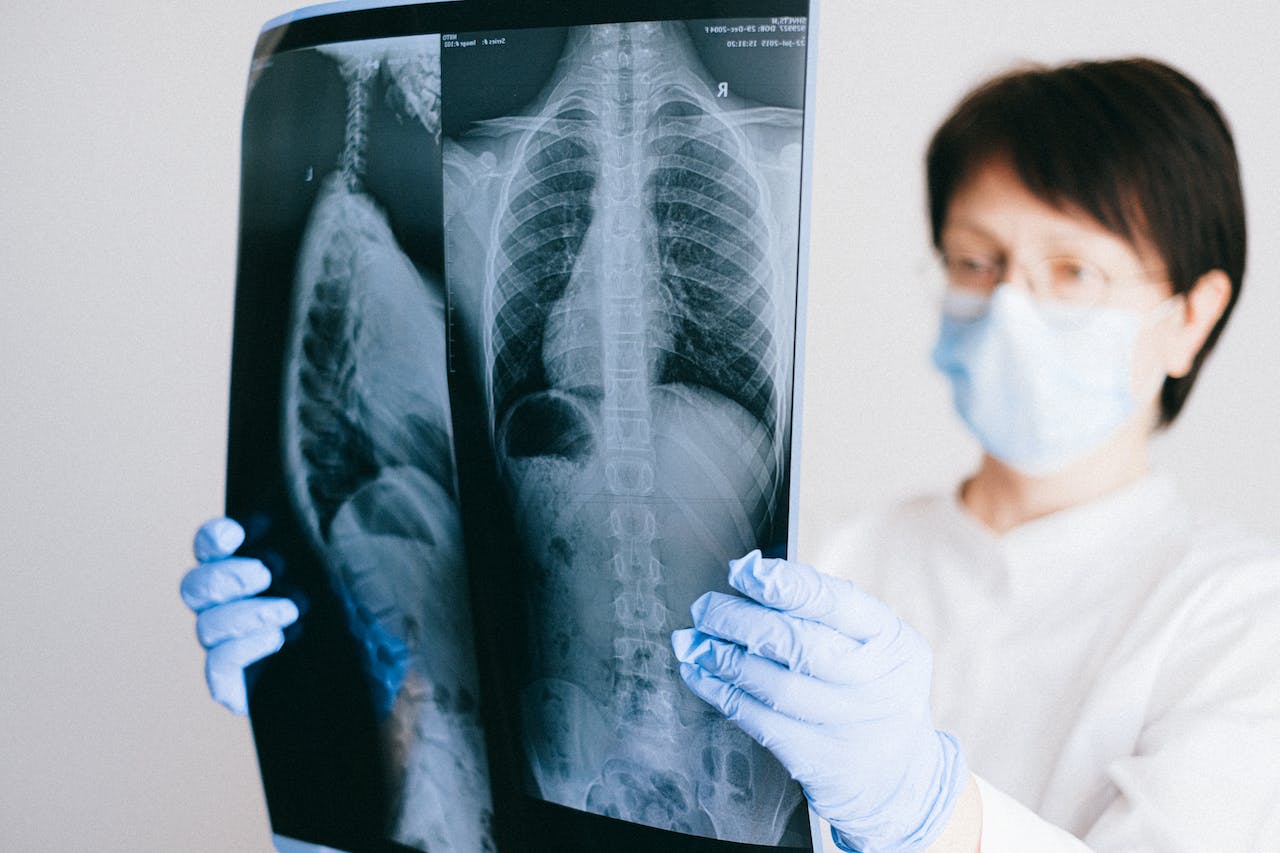Women experience many new sensations when they are pregnant. In this article, we explore one experience in particular – pregnancy ligament pain. We will consider the different types of pregnancy ligament pain and the symptoms, to help you identify what might be causing your discomfort, and provide insights into how women can relieve the impact of ligament pain for a more enjoyable pregnancy experience.

Types of Pregnancy Ligament Pain
During pregnancy, many women experience different types of discomfort and pain. One common type of pain is ligament pain, which can occur in various areas of the body due to the stretching and movement of the ligaments supporting the growing uterus. Pregnancy ligament pain can manifest in different ways, with the two main types being round ligament pain and pelvic girdle pain.
Round ligament pain is typically felt as a sharp pain or jabbing feeling in the lower belly or groin area. It is caused by the stretching of the round ligaments that support the uterus. Round ligament pain is most commonly felt during the second trimester of pregnancy and can be triggered by sudden movements or changes in position. While round ligament pain can be uncomfortable, it is usually harmless and resolves on its own.
On the other hand, pelvic girdle pain is characterised by pain in the pelvic area and lower back. It is caused by the increased pressure on the pelvic joints and the pelvic floor muscles during pregnancy. Pelvic girdle pain can make it difficult for pregnant women to perform daily activities and may worsen with physical activity or prolonged sitting or standing.
What Are the Causes of Pregnancy Ligament Pain?
During pregnancy, the body undergoes numerous changes to accommodate the growing baby, which can cause discomfort. Pregnancy ligament pain is particularly common, but understanding the causes can help expectant mothers manage and alleviate discomfort during this special time.
Hormonal Changes in the Body
During pregnancy, a woman’s body experiences various hormonal changes that play essential roles in supporting the growth and development of the baby. One such hormone is relaxin, which is produced by the ovaries, placenta, and uterus. Relaxin helps to relax the muscles, ligaments, and joints in the body in preparation for childbirth. This increased production of relaxin during pregnancy leads to a significant increase in ligament laxity in the pelvic girdle.
As the ligaments become more lax, they allow for greater flexibility and movement in the pelvic area. However, this increased laxity can also lead to pregnancy ligament pain. The extra strain placed on the already stretched and weakened ligaments can cause discomfort and pain in the lower back, hips, and pelvic region.
In addition to relaxin, other hormones, such as oestrogen and progesterone, also play a role in pregnancy. Oestrogen helps to increase blood flow to the pelvic region, while progesterone helps to relax the smooth muscles in the uterus, preventing premature contractions.
While these hormonal changes are vital for a healthy pregnancy, they can also contribute to the occurrence of pain. The looseness of the ligaments, combined with the increased weight and pressure on the pelvic region, can lead to pelvic girdle pain. It is important for pregnant women experiencing any pain to consult with their healthcare provider to determine the appropriate management strategies.

Physical Activity and Stress on the Pelvic Joints
Physical activity plays a crucial role in maintaining overall health and well-being during pregnancy. However, it is important to understand the impact of physical activity on the pelvic joints.
The pelvic joints undergo significant changes during pregnancy due to hormonal fluctuations and the increasing weight of the baby. As we’ve already touched on, hormonal changes can impact a pregnant woman’s joints. Engaging in physical activity, especially high-impact exercises or activities that involve sudden movements or heavy lifting, can further strain the already stressed pelvic joints. This can exacerbate pregnancy-related pelvic girdle pain.
There are certain risk factors that can increase the likelihood of experiencing pregnancy-related pelvic girdle pain. These include a history of previous pelvic pain, previous pregnancy complications, multiple pregnancies (such as twins), and poor posture.
To manage and minimise pregnancy-related pelvic girdle pain, it is important to maintain proper posture and avoid activities that can worsen the pain. Engaging in low-impact exercises, such as prenatal yoga or swimming, can help strengthen the pelvic floor muscles and provide relief. Consulting with a healthcare provider or a physical therapist can also provide guidance on safe and effective exercises and techniques for managing pelvic pain during pregnancy.
By being aware of the impact of physical activity on the pelvic joints and taking proactive measures to minimise stress, pregnant women can maintain their mobility and comfort throughout their pregnancy journey.
Uterine Growth During Pregnancy
During pregnancy, the uterus goes through a remarkable process of growth and expansion to accommodate the developing baby. Throughout each trimester, the size and weight of the uterus increase significantly.
In the first trimester, the uterus remains within the pelvic cavity and is approximately the size of a small pear. As the pregnancy progresses into the second trimester, the uterus begins to rise and expand above the pelvic cavity. By the end of this trimester, around 20 weeks, the uterus is usually at the level of the belly button.
During the third trimester, the uterus continues to grow and reach its maximum size. It can stretch up to the ribcage, pushing other abdominal organs aside to make room for the growing baby. By the end of the pregnancy, the uterus can weigh around 2 pounds or more.
As the uterus expands, the ligaments that support it also stretch. This stretching of the uterine ligaments can sometimes cause the discomfort or pain typical of pregnancy ligament pain. The increased weight and size of the uterus can also lead to pressure on nearby organs, such as the bladder and intestines.

Previous or Subsequent Pregnancies
Both pelvic girdle pain and round ligament pain can vary in severity and impact from one woman to another. If you’ve experienced pregnancy ligament pain in a previous pregnancy, it’s essential to understand how subsequent pregnancies can be affected.
Having a history of pregnancy ligament pain in a previous pregnancy may increase the likelihood of experiencing it again in future pregnancies. However, the severity of symptoms in subsequent pregnancies can vary. It’s possible that if you had a well-managed pregnancy ligament pain condition in your previous pregnancy, you may experience milder symptoms in future pregnancies.
It’s important to give your body sufficient time to recover before attempting another pregnancy, especially if you’ve experienced pregnancy ligament pain. Experts recommend waiting at least 12 months between pregnancies to allow your body to heal and regain strength. This can help reduce the risk of complications and ensure a healthier pregnancy.
If you’re planning for a subsequent pregnancy and have a history of pregnancy ligament pain, it’s important to discuss your concerns and medical history with your healthcare team. They can provide guidance and support to help manage your symptoms and ensure a healthy pregnancy.
Symptoms of Pregnancy Ligament Pain
Lower Abdominal Ache or Sharp Pain During Pregnancy
During pregnancy, many women experience lower abdominal ache or sharp pain at some point. The pain might be described as like a “stitch”. This discomfort can be worrying, but it is often a normal part of the changes the body goes through during pregnancy.
The location of the pain is typically in the lower abdomen, and it can vary in intensity from a dull ache to sharp, sudden pains. This pain is often caused by the stretching and thickening of the round ligaments that surround the uterus. As the baby grows, these ligaments need to stretch to accommodate the growing uterus, which can cause occasional pain on one or both sides of the abdomen.
Certain triggers can make the pain worse, such as sudden movements, coughing, or physical activity. These activities put strain on the round ligaments, causing them to stretch and resulting in discomfort. It’s important to note that this pain is usually temporary and does not pose any serious health risks to you or your baby.
If you experience lower abdominal ache or sharp pain during pregnancy, it is always a good idea to mention it to your healthcare provider to rule out any other causes. They can provide reassurance and guidance on managing the discomfort.
Remember to listen to your body and take it easy when you feel pain. Engaging in gentle exercises, such as prenatal yoga, and avoiding sudden movements or heavy lifting can help alleviate the discomfort. Using a heating pad or taking warm baths may also provide relief.
In most cases, lower abdominal ache or sharp pain during pregnancy is a normal part of the changes happening in your body. However, if the pain is severe, persistent, or accompanied by other symptoms like vaginal discharge or bleeding, it is important to seek medical attention as it could be a sign of a more serious condition.

Pelvic Girdle or Lower Back Pain
During pregnancy, many women experience pelvic girdle or lower back pain. This type of pain can be uncomfortable and sometimes even debilitating. As we’ve already explored, it is often caused by the hormonal changes and the physical strain that pregnancy places on the body.
The pelvic girdle is a group of bones in the pelvis that includes the sacrum, coccyx (tail bone), and two hip bones. These bones are connected by ligaments and muscles, which provide stability and support to the pelvis and the baby.
Pelvic girdle pain can manifest as a dull ache or a sharp, shooting pain in the lower back, hips, groin, or buttocks. It may be worse with certain movements like walking, going up or down stairs, or even getting in and out of bed. Some women may also experience difficulty standing on one leg or turning over in bed.
There are several factors that can contribute to the development of pelvic girdle pain during pregnancy. These include previous pregnancies, a history of pelvic girdle pain, joint hypermobility, a sedentary lifestyle, and certain occupations that involve heavy lifting or prolonged periods of sitting or standing.
Remember, pelvic girdle or lower back pain during pregnancy is common, but it should not be ignored. By taking steps to manage the pain and seeking professional help when necessary, you can have a more comfortable pregnancy journey.
How to Ease Pelvic Girdle Pain
If you’re experiencing pelvic girdle pain during your pregnancy, you’re not alone. Many women go through this discomfort as their bodies go through changes to accommodate their growing baby. The good news is that there are ways to ease the pain and make this journey a little more comfortable for you.
One important step in managing pelvic girdle pain is to listen to your body and give it the rest it needs. Avoid activities that worsen the pain, and take regular breaks to rest and change positions. This will help alleviate the strain on your pelvic girdle and reduce discomfort.
Supportive devices can also provide much-needed relief. Consider using a pregnancy support belt or a pelvic support belt, which can help stabilise your pelvis and reduce pain. These belts provide extra support to the ligaments and muscles in the pelvic area, allowing you to move more comfortably.
Applying heat or cold to the affected area can also bring relief. You can use a heating pad or an ice pack, whichever feels more comfortable for you. The heat helps relax the muscles and reduce inflammation, while the cold helps numb the pain. Experiment with both to see which works best for you.
Practicing good posture is crucial in managing pelvic girdle pain. Be mindful of your posture, especially when standing or sitting for long periods. Avoid slouching and try to maintain a straight back. This will help distribute your weight properly and prevent additional strain on your pelvic girdle.
Gentle exercises, such as prenatal yoga or swimming, can also help alleviate pelvic girdle pain. These exercises strengthen the muscles that support your pelvis and improve your flexibility. However, always consult with your healthcare provider before starting any exercise regimen during pregnancy.
Lastly, don’t hesitate to seek professional help if the pain persists or worsens. Your healthcare provider or a physical therapist specialising in women’s health can assess your condition and provide appropriate treatment. They may recommend manual therapy techniques or other interventions tailored to your specific needs.
Remember, each pregnancy is unique, and what works for one woman may not work for another. It’s important to listen to your body and find the methods that bring you the most relief. With the right strategies in place, you can ease pelvic girdle pain and focus on enjoying this special time in your life.

How to Sleep with Pelvic Pain During Pregnancy
Sleeping with pelvic pain during pregnancy can be challenging, but there are strategies you can try to find relief and get a good night’s sleep. To manage pelvic pain while sleeping, it is important to find a comfortable position that minimises pressure on the pelvis. Here are some tips:
1. Use supportive pillows: Place a pillow between your knees while sleeping on your side to help align your hips and spine. You can also use a pregnancy pillow to provide extra support to your belly and back.
2. Experiment with different positions: Try different sleeping positions to find what works best for you. Some pregnant women find relief by sleeping on their back with a pillow under the hips or on their side with a small pillow supporting the belly.
3. Use heat or cold therapy: Applying a heating pad or cold pack to the affected area before bed may help alleviate pain and promote relaxation. Make sure to use a low heat setting and never fall asleep with a heating pad on.
4. Practice relaxation techniques: Engaging in relaxation techniques such as deep breathing or prenatal yoga before bed can help reduce pain and promote better sleep.
5. Consider a supportive mattress: Investing in a supportive mattress or mattress topper that provides adequate cushioning and spinal alignment can make a significant difference in your comfort.
Remember to always consult with your healthcare provider before trying any new techniques or using any devices to manage your pelvic pain during pregnancy.

Are You Experiencing Intense and Severe Pain at Times?
Pregnancy is a miraculous journey that brings joy and anticipation. However, it’s not uncommon for pregnant women to experience intense and severe pain at times. Pelvic girdle pain can range from dull to shooting or burning sensations, with an average intensity of 50-60mm on a visual analogue scale.
It is important to distinguish pelvic girdle pain from other causes of abdominal pain. One common cause is round ligament pain, which occurs due to the stretching and pulling of the round ligaments that support the uterus. However, it is crucial for healthcare providers to rule out other potential causes, such as urinary tract infections, symphysis pubis dysfunction, or appendicitis, which may require different treatments.
If you experience intense and severe pain during pregnancy, seeking medical advice is paramount.
FAQs
Is groin pain a sign of early pregnancy?
While it is not typically considered a specific sign of early pregnancy, some women may experience mild to moderate groin pain during early pregnancy.
The stretching of the uterus is a natural part of early pregnancy as the baby grows. This stretching can cause discomfort in the lower abdomen, including the groin area. Hormonal changes that occur during pregnancy can also contribute to pelvic pain, including the groin. Additionally, constipation is a common issue in early pregnancy, and the buildup of stool can put pressure on the pelvic area, leading to discomfort or pain, including in the groin.
Overall, while groin pain can occur in early pregnancy, it is not necessarily a reliable sign on its own.
When does pelvic girdle pain start in pregnancy?
Pelvic girdle pain can start at any time during pregnancy, but it is more commonly experienced in the second and third trimesters. It often begins gradually and may worsen as the pregnancy progresses.
Why is pelvic girdle pain worse at night?
Many women with pelvic girdle pain have reported that their pain tends to worsen at night. One reason why pelvic girdle pain may be worse at night is due to the increased sensitivity in the nervous system during pregnancy. The nervous system can become upregulated by various stressors, such as hormonal changes and the weight of the growing baby. This heightened sensitivity can result in an increased perception of pain, making the symptoms of pelvic girdle pain more noticeable during nighttime.
Another factor that can contribute to increased pain at night is being in one position for longer periods of time while sleeping. This can cause distortions in the pelvis and put additional pressure on the already sensitive joints, exacerbating the pain associated with pelvic girdle pain.
Additionally, during the night, we are generally less distracted by daily activities and external stimuli. This can lead to a heightened awareness of the sensation of pain, making it feel more intense during nighttime.
If you are experiencing pelvic girdle pain and find that your pain is worse at night, there are some strategies you can try to alleviate discomfort. Using supportive pillows or cushions between your legs while sleeping can help maintain better pelvic alignment. It may also be beneficial to change positions frequently throughout the night to prevent prolonged pressure on the pelvic area.


